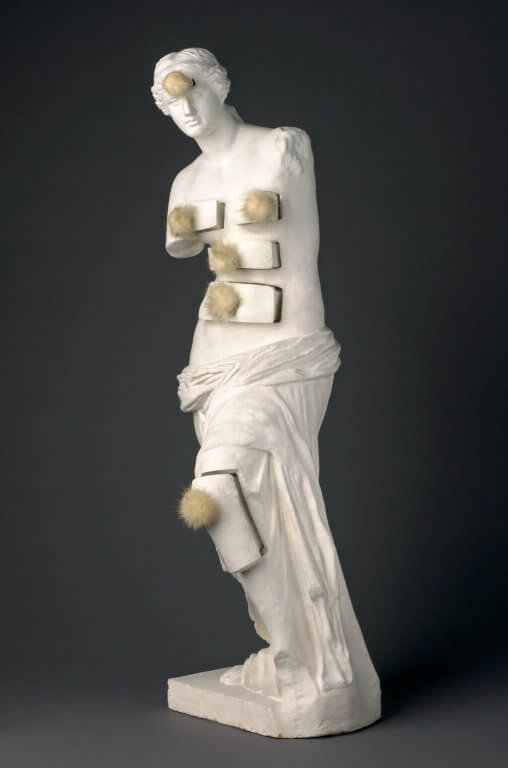Venus de Milo with Drawers, 1936 by Salvador Dali

Among Salvador Dali's many memorable works, perhaps none is more deeply embedded in the popular imagination than Venus de Milo with Drawers, a half-size plaster reproduction of the famous marble (at Louvre, Paris), altered with pompon-decorated drawers in the figure's forehead, breasts, stomach, abdomen, and left knee. The provoking combination of cool painted plaster and silky mink tufts illustrates the Surrealist interest in uniting different elements to spark a new reality. For the Surrealists the best means of provoking this revolution of consciousness was a special kind of sculpture that, as Dali explained in a 1931 essay, was "absolutely useless ... and created wholly for the purpose of materializing in a fetishistic way, with maximum tangible reality, ideas and fantasies of a delirious character." Dali's article, which drew upon the ideas of Marcel Duchamp's Readymades, inaugurated object making as an integral part of Surrealist activity.
Dali was deeply influenced by the works of Sigmund Freud, contending:
The only difference between immortal Greece and contemporary times is Sigmund Freud, who discovered that the human body, purely platonic in the Greek epoch, is nowadays full of secret drawers that only psychoanalysis is capable to open."
For this 1936 Surrealist object, Dali cuts six drawers into Venus, transforming the Greek goddess into a piece of living furniture, a visual pun on the phrase "chest" of drawers, also known as a bureau. Her simple, white surface, is complemented by elegant fur knobs, a tribute to her beauty and erotic potential. In addition, the drawers are a metaphor for the way Freudian psychoanalysis opens the hidden areas of the unconscious. In Dali's words, "Freud discovered the world of the subconscious on the tumid surfaces of ancient bodies, and Dali cut drawers into it."
The Venus de Milo with Drawers is a sculpture that combines ancient Greek art with Surrealism, blending the traditional with the avant-garde. The sculpture is a commentary on the nature of beauty and the human mind. The traditional Venus de Milo represents the ideal of beauty, while the drawers represent the hidden and often imperfect aspects of human nature. The combination of these two elements creates a sculpture that is both beautiful and thought-provoking.























